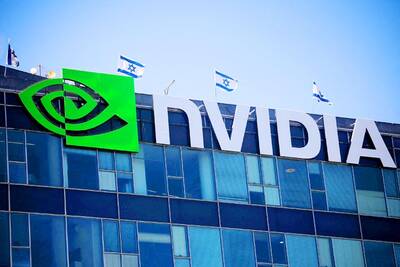Advanced Semiconductor Engineering Inc (ASE, 日月光半導體) has brushed off concerns of a potential rivalry with Taiwan Semiconductor Manufacturing Co (TSMC, 台積電) amid reports the Taiwanese chipmaker has put together a large team to make further inroads into ASE’s main market.
A senior executive with ASE, the world’s largest integrated circuit packaging and testing vendor, told the Central News Agency on Tuesday that the company hopes to have a “symbiotic” relationship with TSMC and that it would also expand into the flip-chip and wire-bonding sectors.
The executive, who requested anonymity because of not being authorized to speak publicly on the issue, said ASE would also increase its capital expenditure and investment in research and development to strengthen its market competitiveness.
Local media reported earlier this month that TSMC, the world’s largest contract chipmaker, had recently recruited engineers — many reportedly from ASE and Siliconware Precision Industries Co (矽品精密) — to establish its own 400-person packaging and testing team.
TSMC has been involved in the sector through investments in other companies, but this would be the chipmaker’s most aggressive foray into packaging to date, raising questions about whether it might eventually challenge ASE and Siliconware, which is the second-biggest company in the field.
Though the executive did not define how the symbiotic relationship between ASE and TSMC might evolve, he said he expected TSMC would invest more in testing and packaging over the next 10 years because capital expenditure in the core chipmaking industry is likely to fall.
The global average capital expenditure in chip making is about US$25 billion annually, while average capital expenditure in integrated circuit packaging and testing is about US$5 billion, the executive said.
Separately, Apple Inc and Qualcomm Inc were rebuffed in separate attempts to invest cash with TSMC in a bid to secure exclusive access to smartphone chips, people with knowledge of the matter said.
Both proposals included investments, each of more than US$1 billion, for TSMC to set aside production dedicated to making chips exclusively for them, said the people, who declined to be identified because the details are not public.
While TSMC is Qualcomm’s biggest supplier, the Taiwanese firm has been successful because it has worked with multiple customers. Dedicating one facility to a single product or customer creates the risk of a fabrication plant becoming a burden if the product, client or technology changes, TSMC chief financial officer Lora Ho (何麗梅) said in an interview on July 19.
“You have to be careful. Once that product migrates, what are you going to do with that dedicated fab?” Ho asked. “We would like to keep the flexibility.”

Micron Memory Taiwan Co (台灣美光), a subsidiary of US memorychip maker Micron Technology Inc, has been granted a NT$4.7 billion (US$149.5 million) subsidy under the Ministry of Economic Affairs A+ Corporate Innovation and R&D Enhancement program, the ministry said yesterday. The US memorychip maker’s program aims to back the development of high-performance and high-bandwidth memory chips with a total budget of NT$11.75 billion, the ministry said. Aside from the government funding, Micron is to inject the remaining investment of NT$7.06 billion as the company applied to participate the government’s Global Innovation Partnership Program to deepen technology cooperation, a ministry official told the

Taiwan Semiconductor Manufacturing Co (TSMC, 台積電), the world’s leading advanced chipmaker, officially began volume production of its 2-nanometer chips in the fourth quarter of this year, according to a recent update on the company’s Web site. The low-key announcement confirms that TSMC, the go-to chipmaker for artificial intelligence (AI) hardware providers Nvidia Corp and iPhone maker Apple Inc, met its original roadmap for the next-generation technology. Production is currently centered at Fab 22 in Kaohsiung, utilizing the company’s first-generation nanosheet transistor technology. The new architecture achieves “full-node strides in performance and power consumption,” TSMC said. The company described the 2nm process as

Shares in Taiwan closed at a new high yesterday, the first trading day of the new year, as contract chipmaker Taiwan Semiconductor Manufacturing Co (TSMC, 台積電) continued to break records amid an artificial intelligence (AI) boom, dealers said. The TAIEX closed up 386.21 points, or 1.33 percent, at 29,349.81, with turnover totaling NT$648.844 billion (US$20.65 billion). “Judging from a stronger Taiwan dollar against the US dollar, I think foreign institutional investors returned from the holidays and brought funds into the local market,” Concord Securities Co (康和證券) analyst Kerry Huang (黃志祺) said. “Foreign investors just rebuilt their positions with TSMC as their top target,

H200 CHIPS: A source said that Nvidia has asked the Taiwanese company to begin production of additional chips and work is expected to start in the second quarter Nvidia Corp is scrambling to meet demand for its H200 artificial intelligence (AI) chips from Chinese technology companies and has approached contract manufacturer Taiwan Semiconductor Manufacturing Co (TSMC, 台積電) to ramp up production, sources said. Chinese technology companies have placed orders for more than 2 million H200 chips for this year, while Nvidia holds just 700,000 units in stock, two of the people said. The exact additional volume Nvidia intends to order from TSMC remains unclear, they said. A third source said that Nvidia has asked TSMC to begin production of the additional chips and work is expected to start in the second